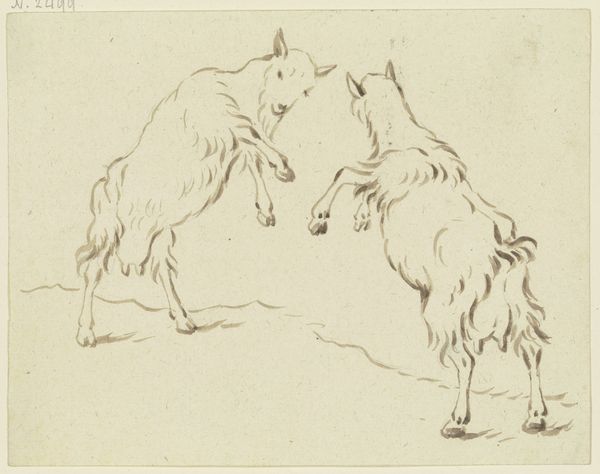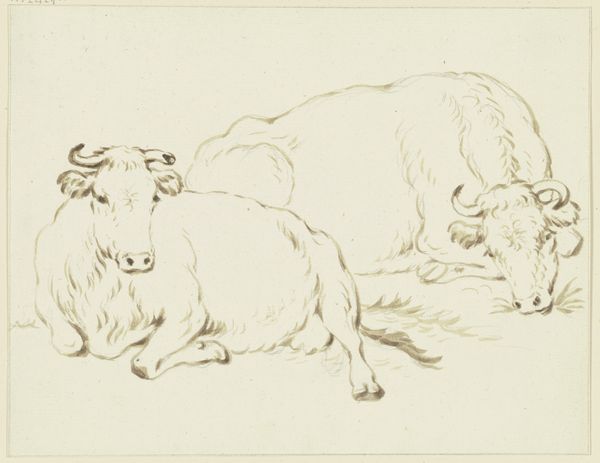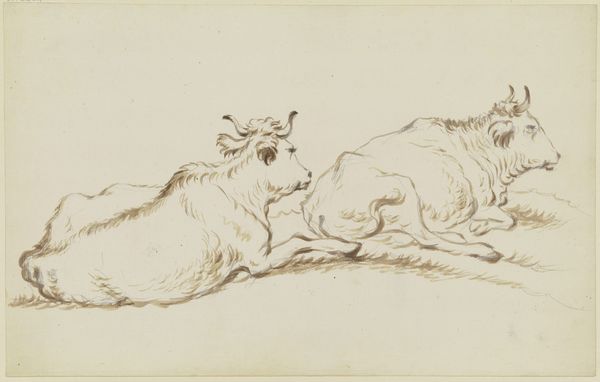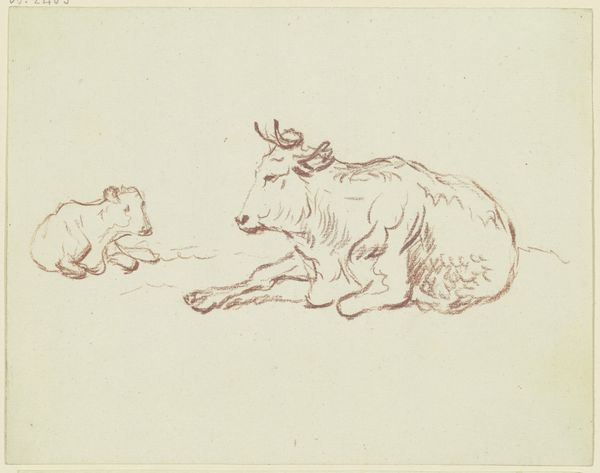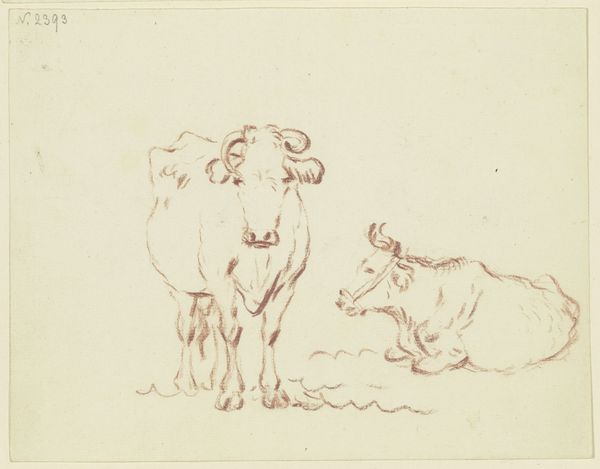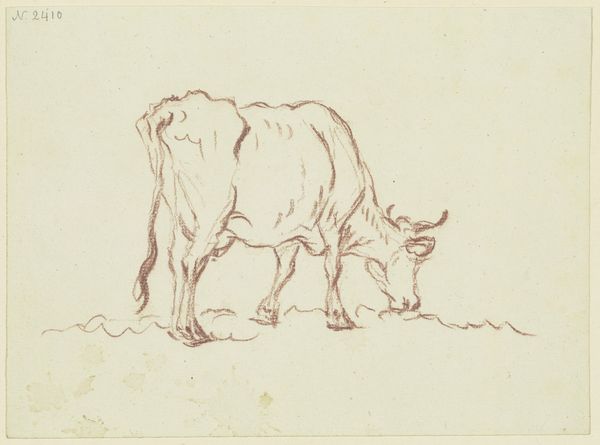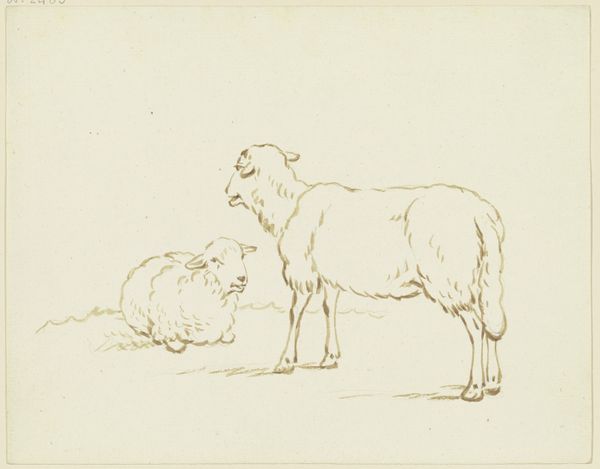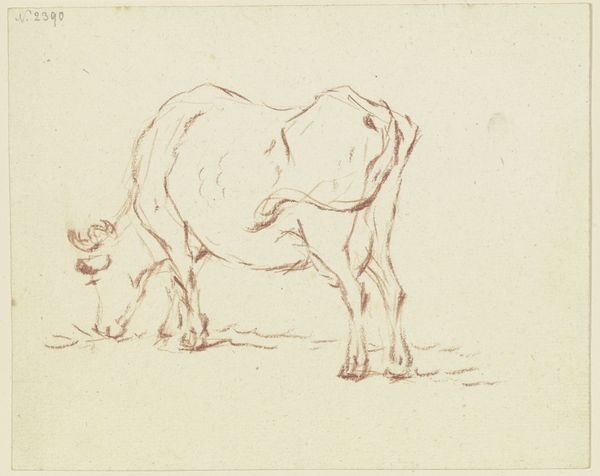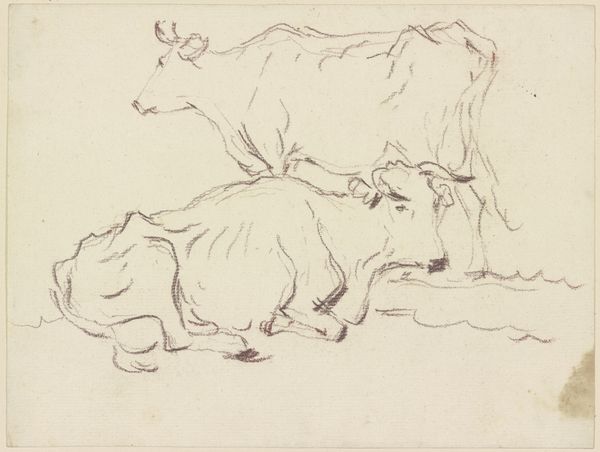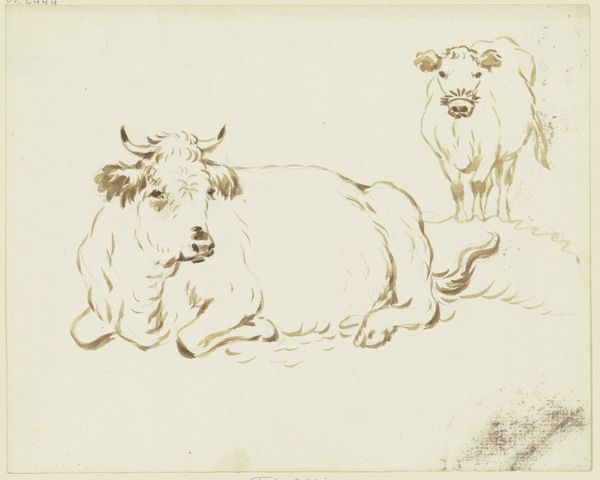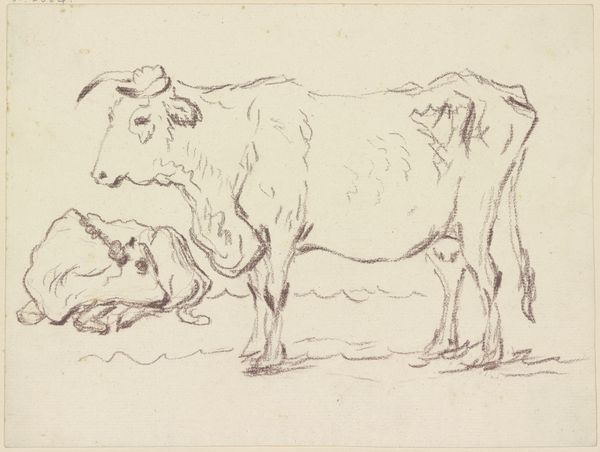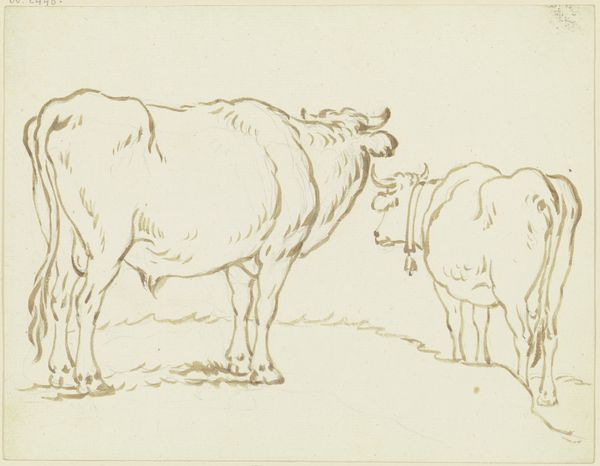
drawing, ink, graphite
#
portrait
#
drawing
#
landscape
#
etching
#
ink
#
graphite
Copyright: Public Domain
Curator: Here we have "Stehende und liegende Ziege", which translates to "Standing and lying goat". It is an ink and graphite drawing housed here at the Städel Museum. Editor: Immediately, I’m struck by the almost dreamlike quality of the drawing. The washes create soft contours, and the overall palette is limited. It’s very soothing. Curator: I find myself wondering about the role of goat herding during the era this piece was created and the status of the animal in relation to agriculture and wealth creation. Editor: I am fascinated by how Hirt uses line to give volume to these goats, especially in rendering their fur. Notice the economy of strokes, each one suggesting texture and depth. Curator: Perhaps it would reveal insights into historical farming and animal labor practices, illuminating how such skills contributed directly to a sustainable agricultural community during a period when human work was highly dependent on domesticated animal strength. Editor: Yet, he abstracts the forms. Look at the way the goat on the left stands—its shape is implied as much as it is delineated. What does that say about how we're meant to perceive the animals as beings in their own right, distinct from our relationship with them? Curator: The question that resonates within me is the labor and socioeconomic standing of individuals rearing goats back then; researching the cost and uses for their wool, their milk or as chattel would also add relevance when pondering historical context around agriculture-dependent societies back in this period Editor: Considering this sketch through semiotics would also shed a light on societal ideas surrounding fertility and livelihood from pastoral imagery—it suggests stability, health, even wealth stemming forth when read today while drawing upon past interpretations regarding its message, or function within social discourses around status representation by agricultural means specifically. Curator: Thank you for the deep visual assessment. Editor: And thank you for framing the practical implications and sociohistorical framework of the piece!
Comments
No comments
Be the first to comment and join the conversation on the ultimate creative platform.
